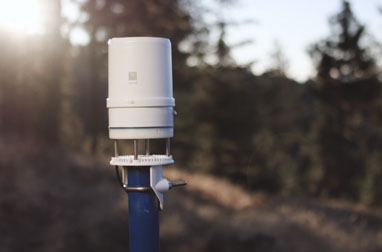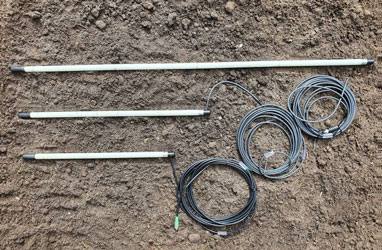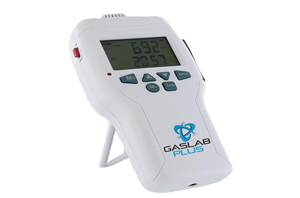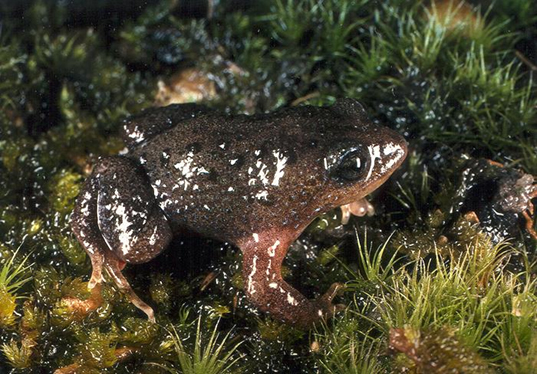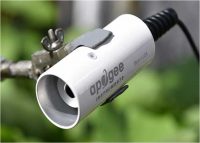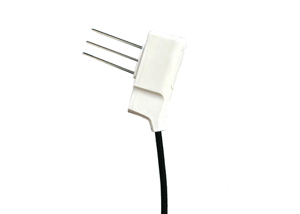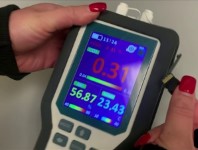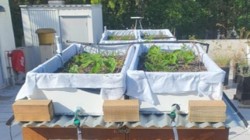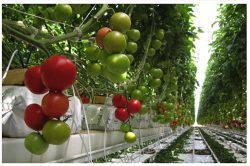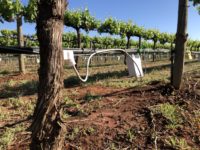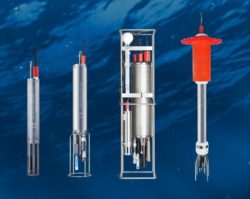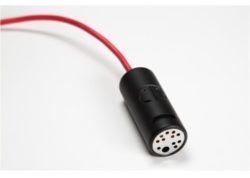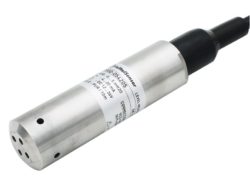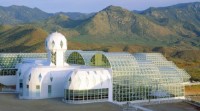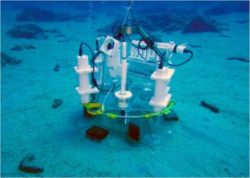How Accurate is the ATMOS 41 Weather Station?
Weather monitoring is crucial in Australian and New Zealand environmental research, agriculture, and hydrological studies. The accuracy and reliability of weather data can significantly impact decision-making and research outcomes. This brings us to the ATMOS 41 all-in-one weather station, a tool designed by METER Group to offer comprehensive and precise weather data. But how accurate…
Read MoreEdaphic Scientific and SWAP Instruments collaborate on soil redox
In the realm of soil science and biogeochemistry research, the importance of accurate and real-time soil monitoring is paramount. Edaphic Scientific, a renowned provider of environmental monitoring solutions, has recently formed a strategic partnership with SWAP Instruments to extend comprehensive support for their cutting-edge soil redox probes in Australia and New Zealand. This collaboration marks…
Read MoreCO2 and indoor air quality of Australian offices and schools
Increasingly, modern Australian offices and indoor workspaces are designed to be energy-efficient and comfortable for the people working there. However, well-sealed and insulated buildings can also negatively impact indoor air quality (IAQ) if there isn’t enough ventilation. This can seriously affect employees’ health, well-being, and productivity. Monitoring and managing IAQ using devices like CO2 meters…
Read MoreAn endangered frog and soil water potential
Soil water potential, an endangered frog and climate change are three topics rarely discussed together. Yet, recent research from the University of Western Australia found that the successful breeding of an endangered frog is intricately linked with soil water potential which, in turn, may be altered by climate change dynamics. Understanding the interplay of these…
Read MoreWeather stations and understanding endangered bird species
Researchers from the University of Tasmania, DPIPWE and CSIRO are measuring weather patterns on Albatross Island with the ATMOS 41 Weather Station. Albatross Island is located between Tasmania and Victoria in Bass Strait. The weather data is being used to understand the impacts of climate on Shy Albatross, an endangered species found on 3 remote islands off Tasmania. Read more…
Read MoreA new range of spectral and radiation sensors
Edaphic Scientific is now supporting a range of Apogee spectral and radiation sensors for Australian scientific researchers. The state-of-the-art sensors measure a variety of spectral and radiation parameters including solar radiation, photosynthetically active radiation (PAR), ultraviolet (UV) radiation, net radiation, NDVI, PRI and infrared temperature for plant canopies. The sensors are SDI-12, calibrated, easy to…
Read MoreStem water content: a new sensor for plant water relations
A new stem water content sensor has been released by Implexx Sense. The new sensor will enhance the understanding of plant water relations and will also assist plant physiologists, ecohydrologists, modellers and more. what is stem water content? Stem water content, also known as sapwood water content or moisture, gravimetric or volumetric water content,…
Read Moretrends in CO2 sensing technology
CO2meter.com is a world leading manufacturer and supplier of gas detecting equipment located in Florida, USA. In this article, CO2meter.com outlines the 2021 trends in gas detecting technology and what may be expected in the near future. In the past, gas sensing technologies focused on size and ease of integration. Recently, there has been an…
Read MoreMonitoring of subtropical green roof water balance in Brisbane
Author: Sylvie Kunz PhD candidate, Green Infrastructure Research Labs (GIRLS), Cities Research Institute, Griffith University, Queensland, Australia Green roofs are a nature-based approach to help cities overcome the negative effects of urbanisation. By greening the cities, stormwater can be retained, the urban environment cooled, and habitats can be created. Monitoring of green roof water…
Read MoreReducing water inputs with on demand irrigation scheduling
New research has shown up to 40% reduction in irrigation can be achieved with soils or plant based decision making. Water resources are becoming increasingly expensive and scarce. To reduce costs and save on water, it is possible to alter irrigation scheduling (i.e. timing and dosing). Yet, when altering or decreasing irrigation it is critical…
Read MoreIrrigation with sap flow sensors: a video explainer
Irrigation managers face two questions: when and how much to irrigate. A new video, available on YouTube and with a weblink below, explains how sap flow sensors can be used for irrigation scheduling and dosing. Sap flow sensors measure crop water use or transpiration. With a sap flow sensor, it is possible to determine how…
Read MoreMeasuring CO2 levels in moviegoer emotions
Carbon dioxide (CO2) sensors are used for a wide range of applications from indoor air quality, to medical and environmental monitoring. But now CO2 sensors can also be used to measure human emotions! In this article, originally published on the CO2meter.com blog, researchers from Germany’s Max Planck Institute discuss how they used CO2 sensors to…
Read MoreSap flow, evapotranspiration and irrigation management
Irrigating scheduling and amount can be accurately determined by combining sap flow (crop water use) sensors and evapotranspiration (ETo) data. This article outlines how growers, researchers or physiologists can use the Implexx Sap Flow Sensor, alongside the ATMOS 41 weather station, or the Implexx Evapotranspiration (ETo) station. Although this article has a focus on grapevines,…
Read MoreEdaphic Scientific is now supporting Sea and Sun Technology!
Edaphic Scientific is now the exclusive distributor in Australia and New Zealand for Sea & Sun Technology. We are excited by the opportunity to support Sea & Sun Technology in our part of the world! Sea & Sun Technology is a world-leading, German manufacturer of water-based sensors for marine science, oceanography, limnology, hydrology, hydrography, groundwater,…
Read MoreReducing urban water pollution with water level sensors
Urban storm water drain pollution can increase during dry weather and become an environmental problem. Water level in drains increases because of transient sources such as over-irrigation of gardens, car washing, cleaning of footpaths, as well as constantly-flowing sources such as groundwater infiltration and broken underground pipes. This is known as dry-weather flow, or non-stormwater…
Read MoreAquaponics supported by internet enabled water quality sensors
EcoSystem Farms is utilising modern techniques in aquaponics to create a natural farming system that is -cide free – that is no herbicides or pesticides! Based on the Fleurieu Peninsula, South Australia, EcoSystem Farms deploys ecological principles to create a natural loop between fish and plants where the fish provide the nutrients and the plants…
Read MoreA new water level sensor for hydrology and irrigation
Implexx Sense has released a new range of low cost, IoT-enabled, water level, depth or pressure sensors. The Implexx Water Level Sensor is ideal for hydrologists and irrigation managers. The water level sensors can be installed in tanks, boreholes, streams, lakes, rivers, estuaries and marine environments, to a depth of 200 metres. The Implexx Water…
Read MoreBiosphere 2 and sap flow sensors: how do tropical trees behave under drought?
monitoring water uptake and transport of a model rainforest ecosystem Author: Kathrin Kühnhammer PhD Student at TU Braunschweig, Environmental Geochemistry, Germany Pictures of a) tropical rainforest glass house in the Biosphere 2 complex, b) inside the tropical rainforest model ecosystem and c) water content and sap flow sensor as well as borehole to…
Read MoreThe Amerigo Lander: a novel underwater device to measure human oceanic impacts
It is no secret that humans are heavily impacting oceans. Measuring these impacts, however, is extremely difficult. Not only are the oceans vast but incredibly deep with the ocean floor at least 6000m down in many locations. Precise measurements of biogeochemical and ecological processes at these depths is technologically hard. An Italian research group from…
Read MoreCO2 sensors in a greenhouse laboratory
Edaphic Scientific supplies a large range of carbon dioxide (CO2) detectors that are suitable for greenhouses and glasshouses. In this article, our supplier of CO2 detectors, CO2Meter, interviewed researchers from NC State University on how they deploy CO2 sensors in their greenhouses. This article originally appeared on the CO2Meter.com website. One intriguing CO2Meter collaboration…
Read More
